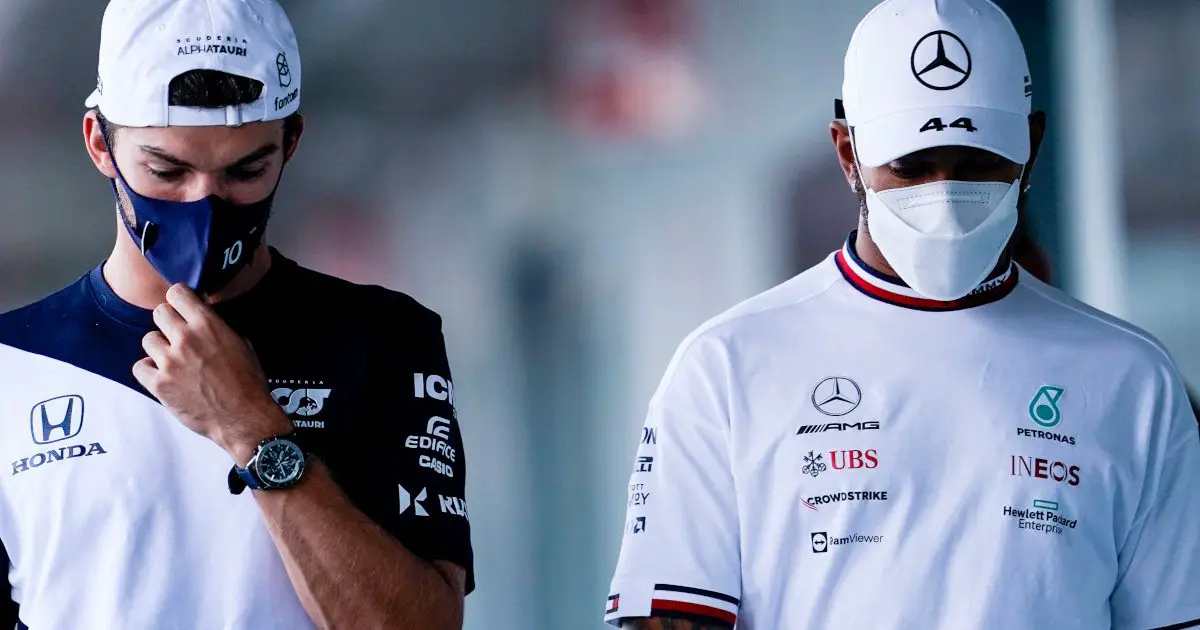Top Gear Cancelled: Celebrating A Show That Changed The World
In the vast expanse of television history, there emerges, once in a blue moon, a spectacle that transcends mere entertainment, becoming a tapestry woven into our collective consciousness. Top Gear was not merely a show; it was an odyssey, a magnificent journey through the winding roads of exhilaration, camaraderie, and unbridled passion for the automotive world.
For 46 luminous years, it was our compass, guiding us through a world where machines were not just steel and motion but were imbued with soul and stories, where every rev of the engine whispered tales of adventures yet to be unfolded.
As the sun sets on this legendary saga, we find ourselves meandering through the lanes of nostalgia, hearts heavy with the weight of farewell, yet alight with the eternal glow of cherished memories. In the rear-view mirror of time, the spirit of Top Gear lingers, an immortal echo of joyous escapades, a timeless relic of a journey that was so much more than the sum of its parts.
Following a horrific crash involving presenter Freddie Flintoff, the BBC has decided to bring the show to a halt. As we bid farewell to this iconic show, let’s take a journey through its rich history, celebrating its triumphs, acknowledging its challenges, and appreciating its contribution to automotive culture.

The Early Days: 1977-2001
In the initial chapters of Top Gear, the show, launched in 1977, embarked on a journey through the automotive world with a conventional and insightful approach. Angela Rippon, a respected journalist and the first female presenter to delve into comprehensive motoring reports on British television, was the inaugural host. The show, in its infancy, was a straightforward motoring magazine program, providing viewers with a blend of car reviews, road safety advice, and motor industry news, predominantly catering to an enthusiast audience.
The 1980s introduced a carousel of co-presenters, including Noel Edmonds, William Woollard, and eventually, Jeremy Clarkson, who would later become synonymous with the show’s identity. During this era, Top Gear began to subtly shift from purely informational content, incorporating light entertainment elements and broadening its appeal beyond mere automotive aficionados. It was a period of exploration and subtle evolution, where the seeds of the show’s future format were unwittingly sown.
The 1990s brought about further changes, with Jeremy Clarkson becoming the main presenter and the show gradually adopting a more humorous and occasionally controversial approach to presenting. Clarkson, with his distinctive style and candid demeanor, brought a new energy to Top Gear, introducing adventurous road trips and challenges, which later became a hallmark of the show. It was during this period that the show began to garner a larger, more diverse audience, laying the foundation for the global phenomenon it would eventually become.
Despite its growing popularity, the show was not immune to challenges. The late 1990s and early 2000s saw a decline in viewership, leading to its initial cancellation in 2001. Little did the world know, this was not the end, but merely a pit stop, a momentary pause before Top Gear would roar back onto our screens, redefined, and destined to become a legendary presence in the world of television entertainment.
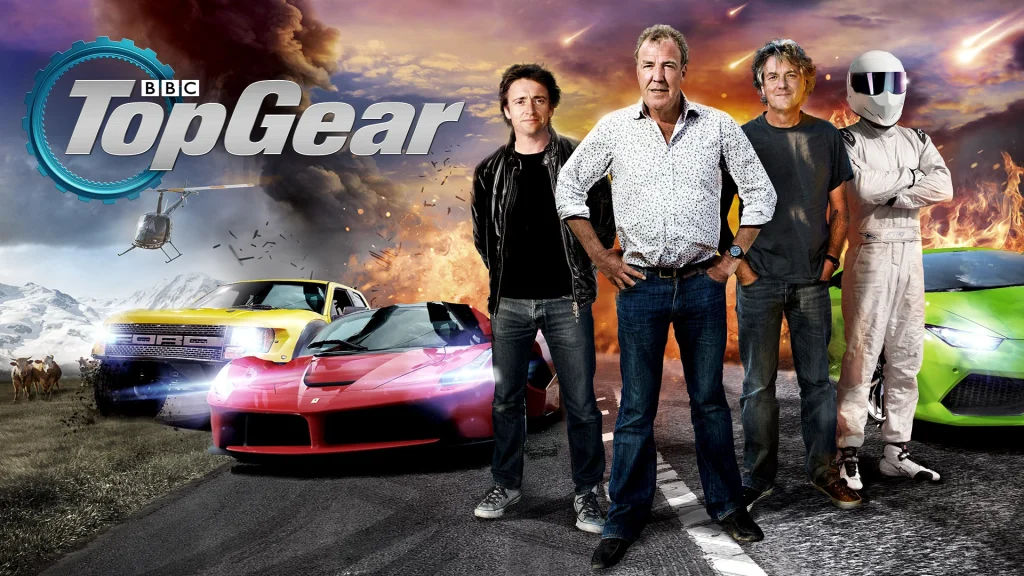
The Golden Era: 2002-2015
In 2002, Top Gear re-emerged from its brief hiatus, reborn and reimagined, steering away from the traditional motoring magazine format and venturing into a realm where automotive enthusiasm, adventure, and entertainment collided. The trio of Jeremy Clarkson, Richard Hammond, and James May took the helm, crafting a new era that would etch the show into the annals of television history.
This period, often referred to as the “Golden Era,” saw Top Gear transcend its roots, becoming not just a show about cars but a cultural phenomenon that captivated audiences worldwide. The chemistry between Clarkson, Hammond, and May was electric, their banter and camaraderie providing a foundation upon which the show’s success was built. The trio didn’t just review cars; they embarked on epic journeys, engaged in ludicrous challenges, and explored the automotive world with a blend of humour, scepticism, and genuine passion.
Top Gear’s global adventures became legendary, from exploring the treacherous terrains of Africa in dilapidated used cars to racing across the vastness of the USA, the show ventured into corners of the world, both celebrated and remote, always with a sense of adventure and often a dash of the absurd. The show’s challenges and specials were often epic in scale, providing as much an insight into the cultures and landscapes of the countries visited as they did the capabilities of the vehicles being driven.
The Stig, the show’s enigmatic test driver, also became a global icon, shrouded in mystery and always hidden behind a helmet, becoming the subject of much speculation and humour. The show’s test track, the Dunsfold Aerodrome, became as familiar to viewers as the presenters themselves, providing a battleground where cars (and occasionally celebrities) were pushed to their limits.
However, the Golden Era was not without its controversies. The presenters often found themselves embroiled in scandals and criticisms, from diplomatic incidents to accusations of insensitivity and bias. Yet, despite the controversies, or perhaps, in part, because of them, Top Gear’s popularity soared, making it one of the most-watched TV shows in the world.
The era came to an abrupt end in 2015, following Clarkson’s dismissal from the BBC. Hammond and May chose to depart alongside him, bringing down the curtain on an era that had redefined what a car show could be. The trio left behind a legacy of laughter, adventure, and a love for cars that was infectious, ensuring that this period of Top Gear would be fondly remembered by fans around the globe.
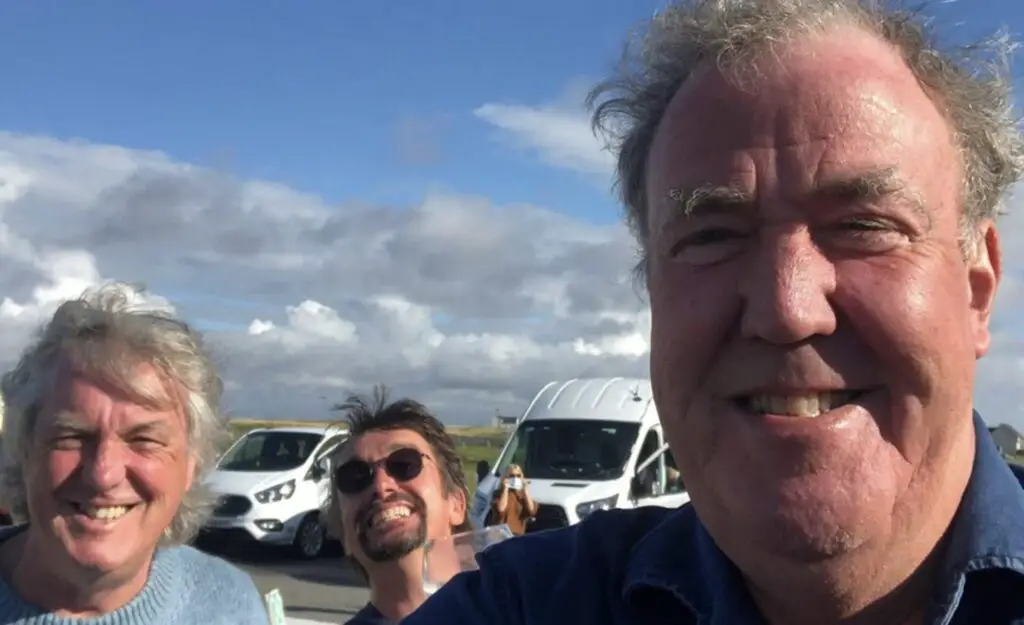
Controversies and Challenges
Top Gear, while celebrated for its adventurous spirit and dynamic presentation, has navigated through a labyrinth of controversies and challenges throughout its existence. The show, particularly during its Golden Era, often found itself in the eye of the storm, where the audacious antics and unfiltered remarks of its presenters sparked both national and international debates.
One of the most notable controversies occurred during a special episode filmed in Argentina, where the presenters, notably Jeremy Clarkson, were accused of intentionally using a license plate (H982 FKL) that alluded to the Falklands War. The incident escalated to a point where the crew and presenters were forced to flee the country amidst angry protests, reflecting the show’s capacity to ignite diplomatic tensions.
The show also faced scrutiny and criticism for various insensitive and politically incorrect remarks. Accusations of xenophobia, sexism, and racism were not uncommon, with the presenters’ jokes and comments often walking a fine line between humour and offence. Clarkson, in particular, was frequently at the centre of such controversies, his candid and often abrasive style both a draw for fans and a point of contention for critics.
In addition to verbal controversies, the physical challenges and stunts performed on the show were often a source of concern and criticism. The presenters were regularly subjected to potentially dangerous situations, from driving unreliable cars through challenging terrains to participating in high-speed races and challenges. Richard Hammond’s near-fatal crash in 2006, while driving a jet-powered car at 288 mph, brought the risks into stark focus, raising questions about the ethical implications and safety of the presenters and crew.
Despite the myriad of controversies, Top Gear persevered, often embracing its rebellious and contentious identity. The controversies, while undoubtedly serious in nature, did little to dampen the show’s popularity. In fact, they often propelled it into the global spotlight, ensuring that Top Gear remained one of the most talked-about shows on television.
However, the culmination of controversies, particularly Clarkson’s altercation with a producer in 2015, eventually led to seismic changes in the show’s format and presenter lineup, marking the end of an era and ushering in a new chapter for the iconic show.
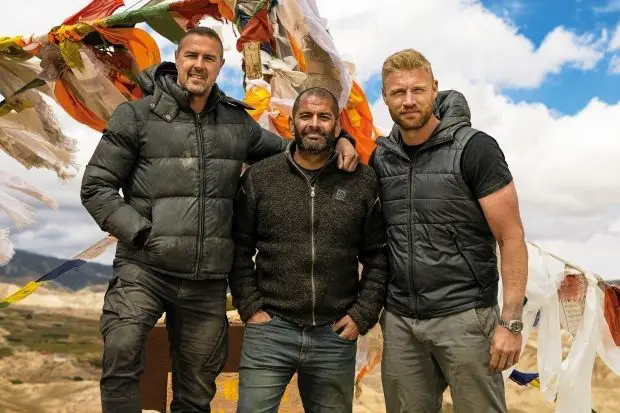
A New Chapter: 2016-2023
The post-Clarkson era saw various presenters, including Chris Evans, Matt LeBlanc, and eventually, Freddie Flintoff, Paddy McGuinness, and Chris Harris, trying to fill the sizable shoes left by the original trio. The show underwent several format changes, attempting to recapture the magic of the Clarkson-May-Hammond era while also forging a new identity. Despite the challenges, Top Gear managed to retain a dedicated fan base and produced several memorable moments.
The Final Lap
The decision to axe “Top Gear” came after Freddie Flintoff’s near-fatal crash in December of the previous year, which raised serious safety concerns. Flintoff’s vehicle, a 130mph Morgan Super 3, flipped over, causing him severe injuries and prompting an internal review of the show’s safety protocols. The incident, coupled with previous accidents involving Richard Hammond and others, brought to light the inherent risks involved in producing a show that often pushed vehicles and presenters to their limits.
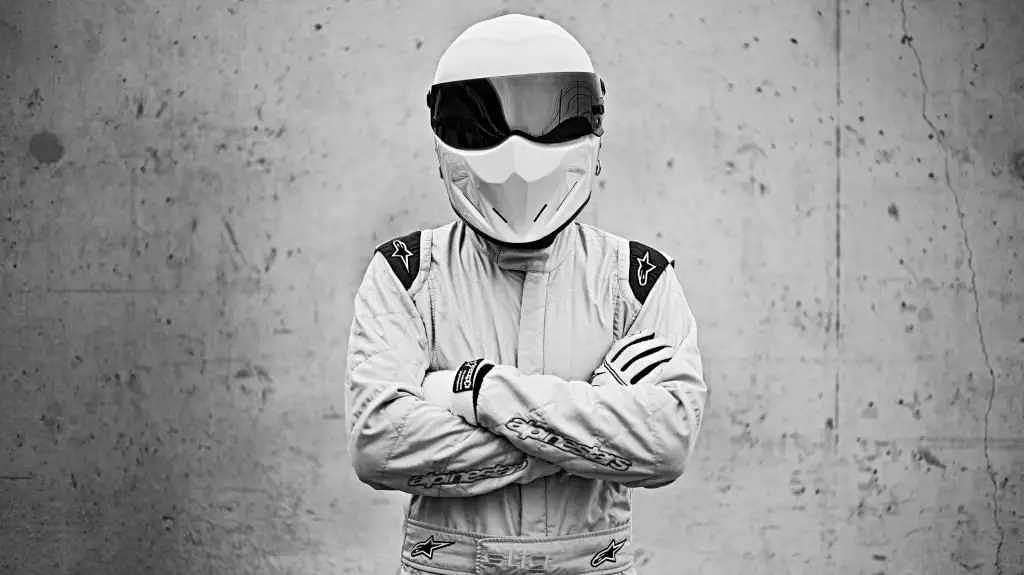
The End of the Road
“Top Gear” was more than just a car show. It was a global platform that brought people together, transcending borders and cultures. It celebrated the beauty, power, and freedom of automobiles, providing viewers with a thrilling ride for 46 years. As we say goodbye, we honor its legacy, cherishing the laughter, adventures, and high-octane moments that will forever be etched in the annals of television history.

